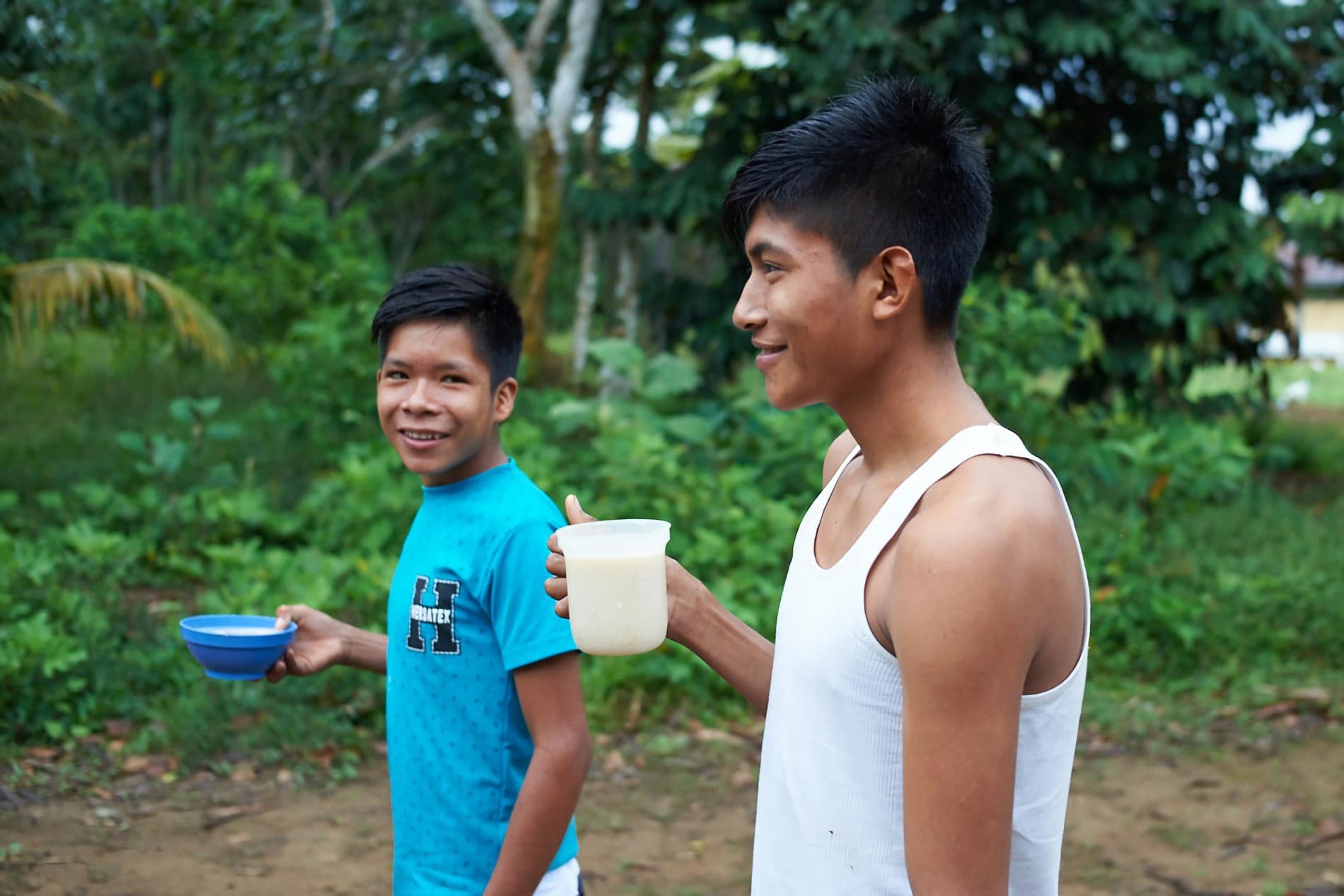
For the Wampis Nation in the Peruvian Amazon, protecting their territory and living well go hand in hand with reclaiming and strengthening their own ancestral knowledge, wisdom, practices and customs. Nowhere is the connection between territory, well-being, culture and autonomy more clear than in the efforts of Shinguito, a Wampis community on the Kankaim river. In Shinguito, the community is working to reclaim their food system by moving away from a reliance on imported foods provided by State-led school meals programmes, to provide their children with tasty, nutritious and culturally meaningful food from their lakes and forest gardens.
“The Wampis woman began to ask the Nunkui girl for what she wanted to eat. Every request appeared instantly and the Wampis families began to eat and live well…”
Fragment from a Wampis story about Nunkui, the mythical goddess of abundance.
For many indigenous peoples across the Peruvian Amazon, living well – ‘tarimat pujut’ in Wampis – is intimately connected to the twin tasks of advancing self-government and strengthening collective social and territorial governance. They must do this amidst multiple threats to their forests, lands and rivers from the State and a plethora of extractive companies. A powerful expression of this movement in defence of territory and life are the Wampis in the north-eastern Peruvian Amazon, who in late 2015 recognized themselves as the Wampis Nation and declared the creation of their own Autonomous Territorial Government (GTANW, by its Spanish acronym).
The Wampis locate the genesis of their Territorial Government within a 7,000 year history of inhabiting their ancestral lands and struggling against successive external forces – from the Iwa to the modern-day Peruvian State – to defend their territory and freely decide their own futures.
In recent years, the GTANW have held a series of summits, bringing together Wampis women, men and youth from across the Kanús (Santiago) and Kankaim (Morona) river basins, established their own autonomous Statute and, through collective debate and consensus, started developing detailed plans for their own self-determined cultural, social, economic and political development, rooted in their own identity, worldview and way of life.
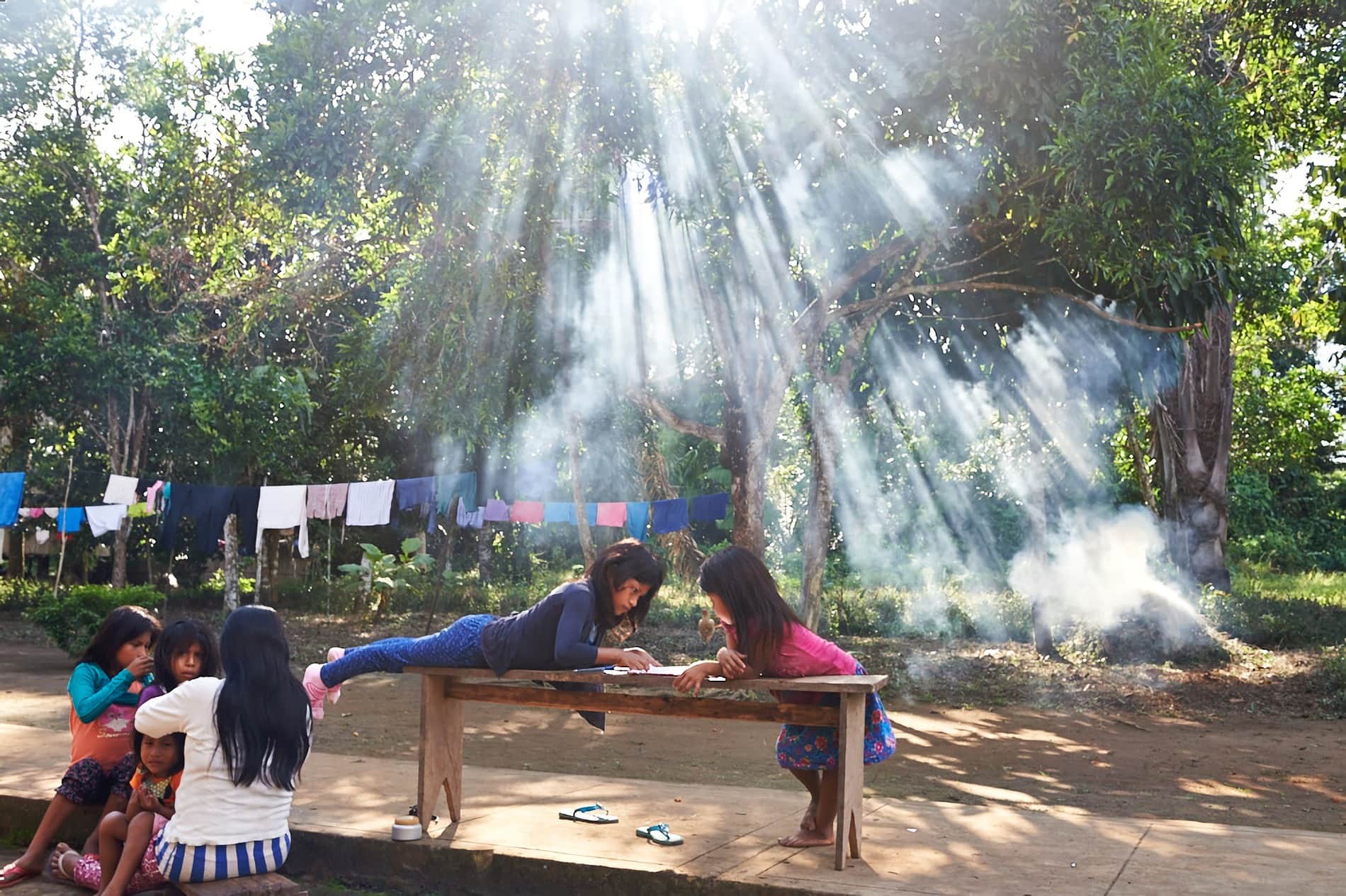
Photo: Dan Haworth-Salter
Central to their vision is their spiritual connection to and defence of Iña Wampisti Nunke, their integral territory, which spans over 1.3 million hectares of mostly old-growth forests, including the sacred mountains of Kampankiasa Murari. To date, the State has only recognized their rights over 400,000 has. – less than a third – of their traditional lands. Seeking full rights over their lands remains a central aim for the Wampis, necessitating their push for the legal recognition of their integral territory. This challenges the Peruvian State’s current approach to titling Indigenous Peoples’ lands, dating from the 1970s, which tends to recognize only the areas immediately adjacent to villages. This results in the fragmentation and ultimate dispossession of indigenous territories.
“Article 21. Cultural Definition of Wampis Territory – The territory of the Wampis Nation integrates diverse spaces whose inhabitants are related to each other. Entsa, the aquatic space, where the Tsunki Shuar live. Nunka, the space of the earth where the living beings with whom we are permanently related reside, the human persons, the animals and their owners, iwanch and tijae, the plants of nature and their mothers, especially Nunkui, who lives in the earth, as well as the rivers, streams, mountains and sacred waterfalls. Nayaim, the air, the space of the sky that is not separated from the earth, where Etsa (sun), our guide, Yaa (stars) and Nantu (moon), as well as Ujuumak and many other beings who give us their spiritual power all live; this is where our dead and the ancestors of our people arrive. All these spaces are alive and depend upon each other. Our people and their people are part of this territory and its components.”
STATUTE OF THE AUTONOMOUS TERRITORIAL GOVERNMENT OF THE WAMPIS NATION (2015).
The GTANW recognizes the profound connection between the health of their territory and the health of Wampis families by ensuring a nutritious food supply. “Food, above all if it is natural, is the basis of life. Our knowledge of food has been passed down through generations by Nunkui,” explains Shapiom Noningo Sesen, Wampis leader and Technical Secretary for the GTANW.
“Along with health, which was taught to us by Mikut, ijarmamu (healthy diet) guarantees biological and spiritual strength,” he says.
“For example, when someone becomes ill, there are foods which they shouldn’t so much as smell, much less eat; the same goes when one is in the process of recovering their health – the same rules apply.”
To this end, as well as taking direct action against illegal miners, loggers and oil and gas companies responsible for harming their forests and contaminating their lands and rivers, Wampis communities are also making efforts to strengthen food sovereignty at the local level, based on the careful stewardship of their forests, lakes and rivers.
According to Noningo, recent decades have brought a series of “profound and disruptive changes” for his people, impacting their cultural identity and way of life.
“Until the 1970s, there was a great variety of natural foods, like chonta palm, wild vegetables, mushrooms and so on,” explains Noningo.
“There was a diversity of fish species [including] putu (carachama), kantash (bujurqui), kanka (boquichico), kusea and sawishnia (red and black-tailed sabalo), yawatumkau (zungaro), kamitian (gamitana); as well as birds such as the wattled curassow (paujil), tinamou (perdiz) and Spix’s guan (pucagunga).
“People used to consume these in various ways: wrapped in leaves and cooked, in soups, roasted or smoked. They also used to eat the leaves from green cassava and cocoyam in meat stews or with smoked fish,” he says.
“A variety of crops were grown in the chacra (forest garden): yam, coconilla, many varieties of sweet potato and plantain.”
However, in the early decades of the 21st century, the Wampis face a very different outlook.
“All of this has changed during the past twenty years,” says Noningo.
“All of [these foods] have become scarcer, above all in Kanús (Santiago river basin), including food crops. These days, the chacras only produce cassava and plantain, [while] the communities nearest to large mestizo settlements consume many processed foods, including tuna, noodles, shop-bought rice, sugar, oil, processed condiments, bread and fried foods.”
The Wampis community of Shinguito has not been immune to these changes. Located on the Kankaim river, in the region of Loreto not far from the border with Ecuador, families in Shinguito have also experienced what Noningo describes as the “imposition of social programs and basic services”, including through the national school breakfast scheme, known as Qali Warma, ironically named after an indigenous Quechua concept of ‘healthy child’.
As part of this State-led programme, school children receive tinned tuna, chicken and milk, along with oats, spaghetti, rice and biscuits, much of it shipped from countries like New Zealand and the United States.
The Wampis are reluctant beneficiaries. They complain that these processed foods not only lack nutritional and cultural value, but also cause an allergic reaction among their children.
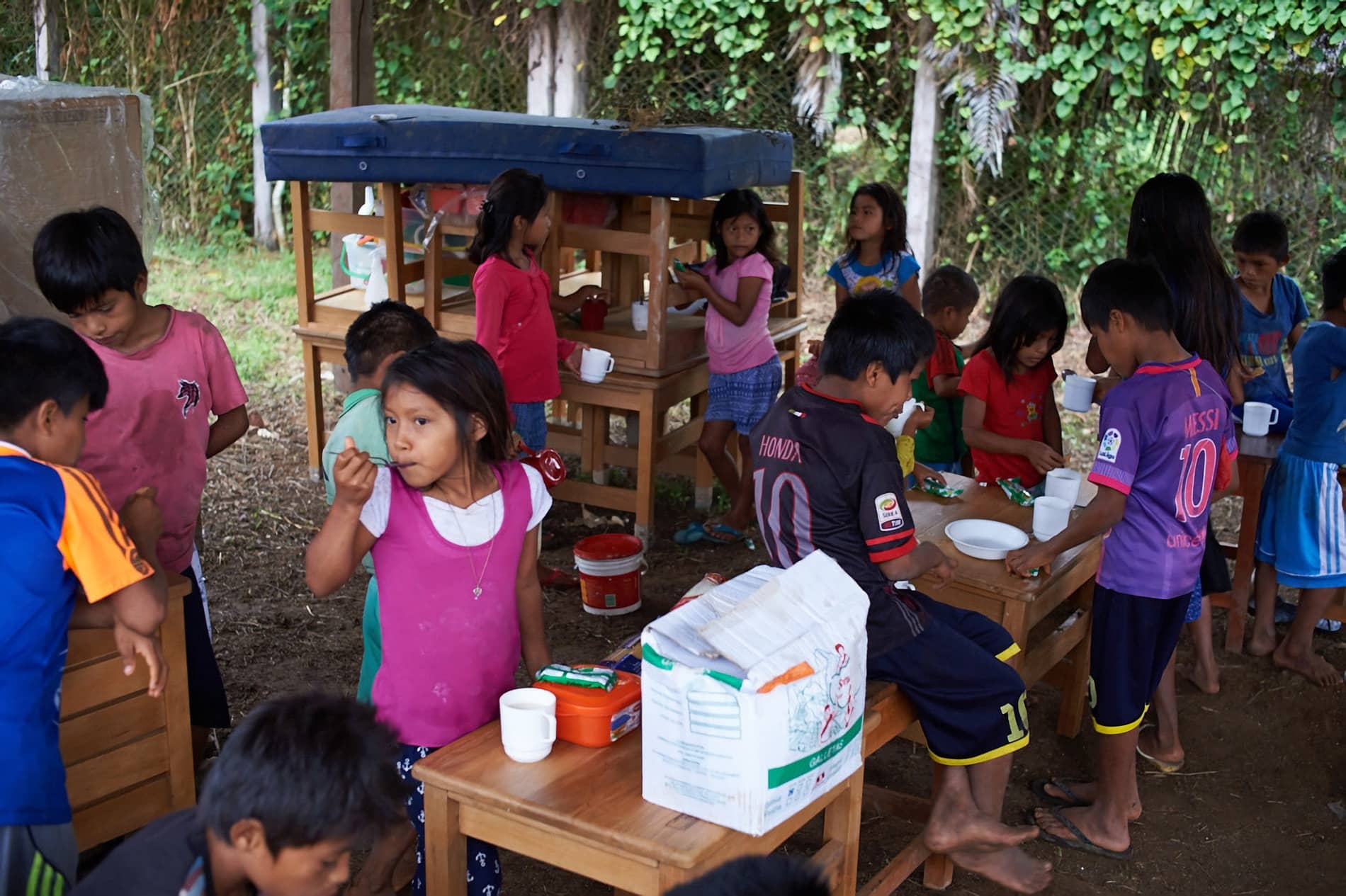
Photo: Dan Haworth-Salter
“The children’s bodies develop rashes and they experience vomiting and diarrhea after eating. For the Wampis, these products aren’t pleasant to consume,” explains Teofilo Kukush Pati, a parent and the GTANW’s Director of Natural Resources Officer. The physical response to wheat and dairy produce is most likely a result of their minimal historical exposure. As Kukush pointed out to IC, their traditional diet has revolved around a wholly different set of foods.
“In general, we eat everything that comes from our community’s lands: plantain, cassava, yam, sweet potato, maize, beans, fish, wild meat, palm larva, chonta palm, and fruits such as sapote, papaya, caimito, gooseberry, Mauritia palm, peach palm and ungurahui,” he says.
The Qali Warma food program is also having a negative local and global ecological impact due to associated food miles and carbon emissions.
In order to both improve their children’s nutrition and well-being and start restoring their local food system, villagers in Shinguito have formed Tirakam, a fishers’ association, to collectively manage and use the seven lakes in their territory. Tirakam is the Wampis name for the kingfisher, and the association is currently devising ways to sustain the abundance of their lakes while supporting local livelihoods – all in the spirit of the riverine bird from which they take their name, which only takes as much fish as it needs to live well. “Tirakam’s objective is to conserve our lakes and provide them with legal protection. Protecting and managing our hydrobiological resources is vital if our future generations are to have a reliable food source and enjoy them,” says Kukush, one of the association’s co-founders.
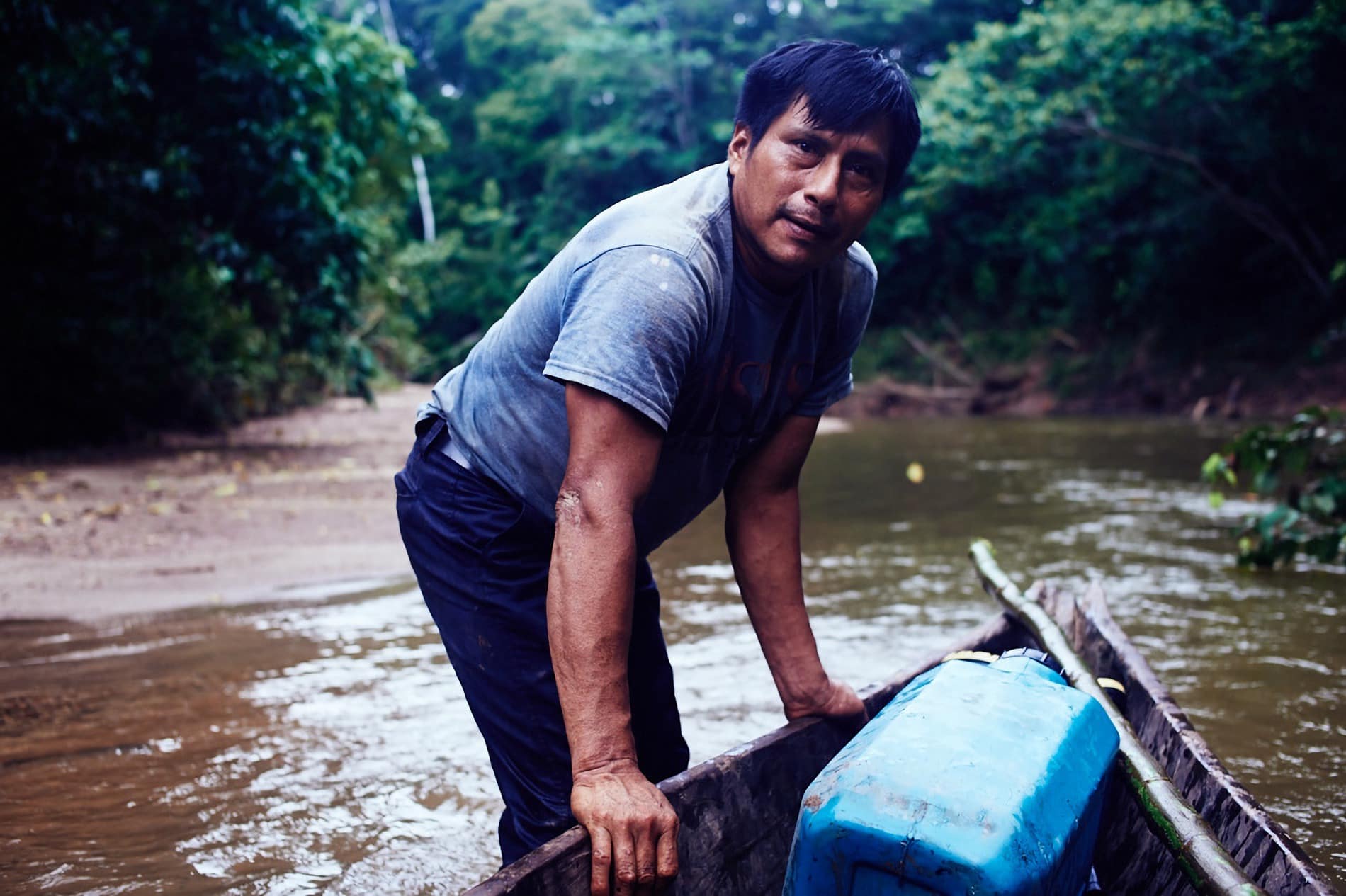
Photo: Dan Haworth-Salter
The Wampis conceive of this initiative as a way of exercising their autonomy; something that resonates with experiences elsewhere in the Peruvian Amazon, such as the Kandozi People, who have had considerable success both sustainably managing fish populations and commercializing their produce in local markets. Tirakam is currently devising communal management strategies for their lakes over the coming years, as well as exploring opportunities to generate income. Kukush explains that this is particularly important to families in Shinguito, “to be able to educate our children in different universities for the good of the community.”
The association is also working toward prototyping a “Wampis Breakfast” to replace the imported processed foods offered by the Qali Warma scheme with fresh, local ingredients such as fish and free-range chicken, plantain, yam, cassava, papaya and melon. Once the pilot program is launched, the association will try to convince local authorities to redirect public funds away from Qali Warma in favour of the community-led alternative that would provide a tastier, more nutritious, more culturally meaningful and more ecologically responsible breakfast made for, by and with Wampis communities themselves.
What is happening in Shinguito is part of a broader movement among the Wampis towards regaining control of their territory and all aspects of the good life, ranging from self-determined education and health to livelihoods and implementing appropriate technologies that raise their quality of life and lessen their dependence on fossil fuels. If Shinguito’s efforts are successful, the GTANW hope to support other communities to replicate their approach. As Noningo says, ““We face formidable and varied challenges: each day, wild foods are being diminished; agrobiodiversity is in decline; there’s a tendency towards consuming processed foods; our forests and water bodies are under considerable pressure. Yet our proposals and dreams are also great and varied: we have created political pacts and agreements and completed the cultural zoning of our territory. We are also beginning to develop an integral management plan for our forests and nature.”
Along with strategies to recover agrobiodiverse food systems–such as women-led initiatives to enable young women to learn from their elders how to cultivate different crop varieties, particularly those on the brink of extinction–the GTANW are fomenting plans to recover species of fauna and flora, for instance by regenerating the lakes within the Kanús river basin and bringing back taricaya and charapa turtle populations, among other species.
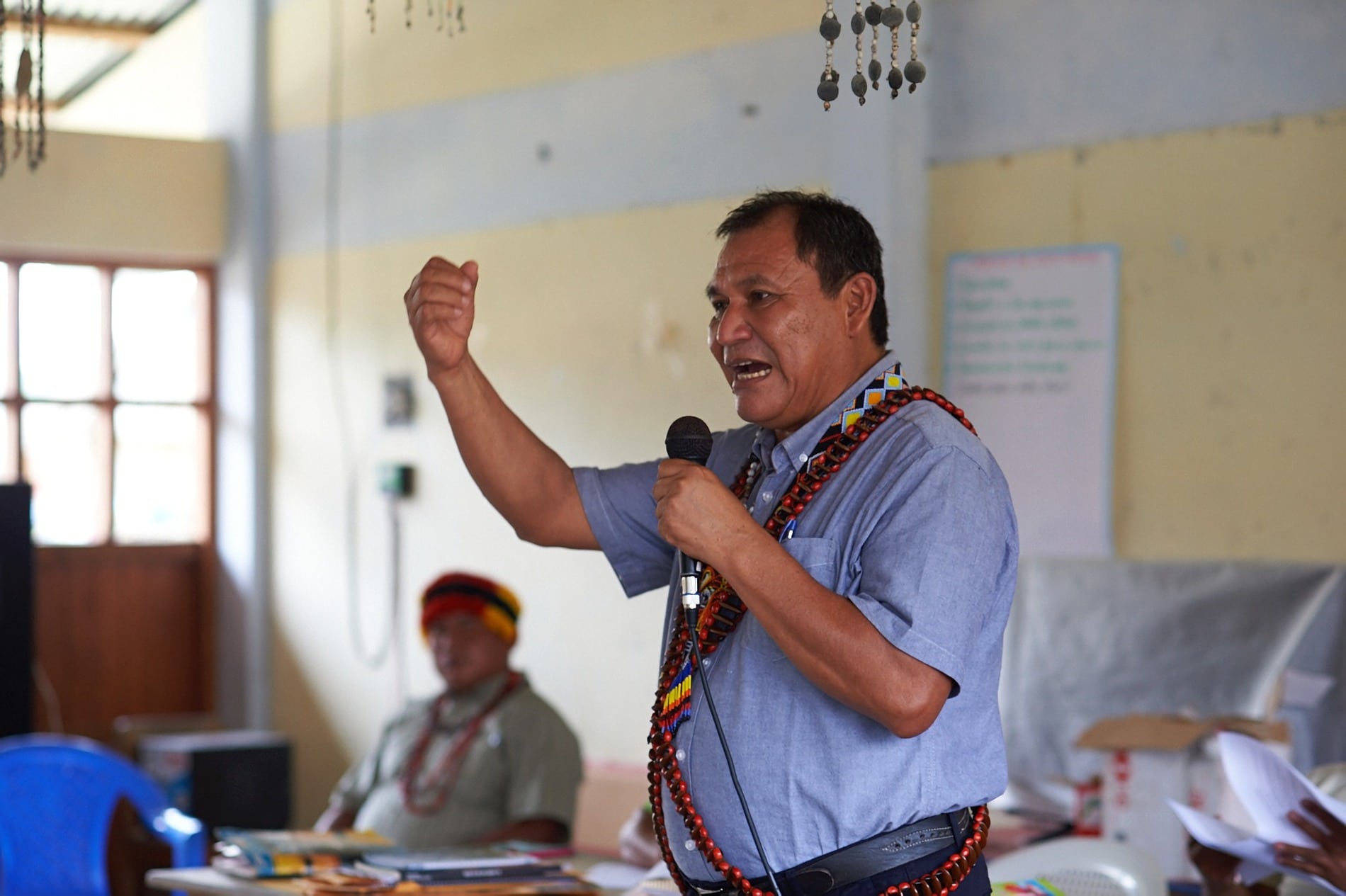
Photo: Dan Haworth-Salter
Along with these internal transformations of everyday social and ecological functions, the Wampis Nation continues to build their autonomy rooted in the full recognition of their integral ancestral territory. In August of this year, together with the Awajun people, they achieved an important victory in their historic struggle, with a Peruvian court ruling suspending all hydrocarbons operations in Block 116 for violating their rights to consultation and consent. This is the first time a Peruvian court has upheld Amazonian indigenous peoples’ right to prior consultation and consent within the context of oil and gas extraction; until now, only one of the country’s hydrocarbons concessions has been subjected to a formal consultation process with Indigenous Peoples.
“The Wampis Nation does not take a positive view of prior consultation processes to date, insofar as the State ultimately takes the final decisions and imposes the projects or concessions which are in its interests,” explains Noningo.
“That said, the court’s ruling is important, as it holds the State and companies responsible for respecting indigenous peoples and desisting from violating their human rights.”
Meanwhile, the GTANW continues to generate collective debates with the aim of building consensus across the 13 thematic areas encompassed by their autonomous Statute, which woven together form a shared vision for the future of the Wampis Nation. And as the Wampis prepare to present this vision during the coming years to the Peruvian State that continues to promote an extractivist economic model, they highlight the political implications of their efforts to establish a self-organized, thriving and diversified economy, based on respect for nature and humanity.
“Reclaiming the health-giving and ecological food of our ancestors is part and parcel of the political work of the GTANW,” says Noningo, “and initiatives such as Shinguito are a vibrant example of this.”
For more, see the Wampis Nation’s Autonomous Territorial Government’s website: http://nacionwampis.com/
WAMPIS RECIPE: NAMAK PAINKAMU (Fish soup)
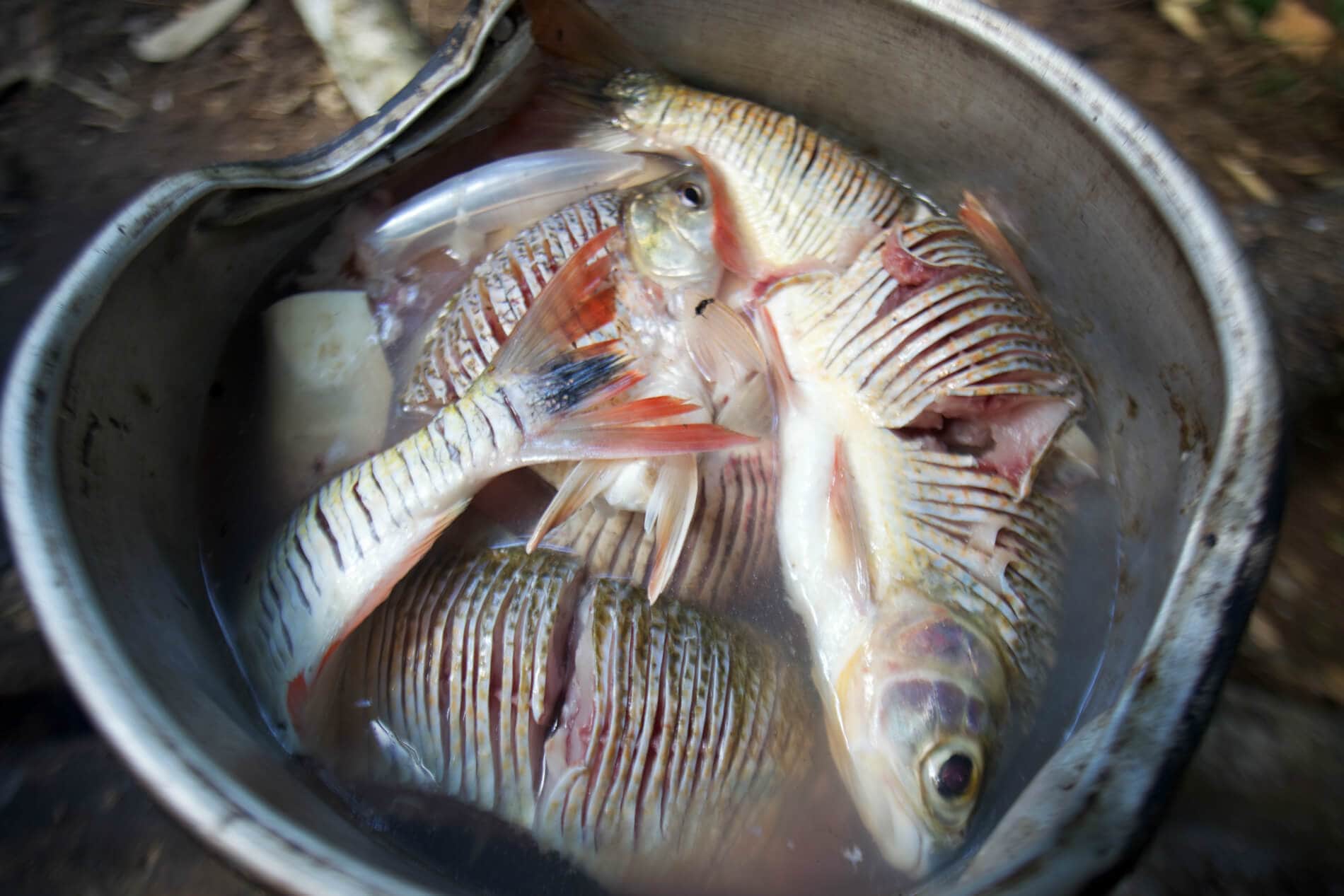
This everyday meal is very straightforward to prepare.

Indigenous Peoples are putting their bodies on the line and it's our responsibility to make sure you know why. That takes time, expertise and resources - and we're up against a constant tide of misinformation and distorted coverage. By supporting IC you're empowering the kind of journalism we need, at the moment we need it most.